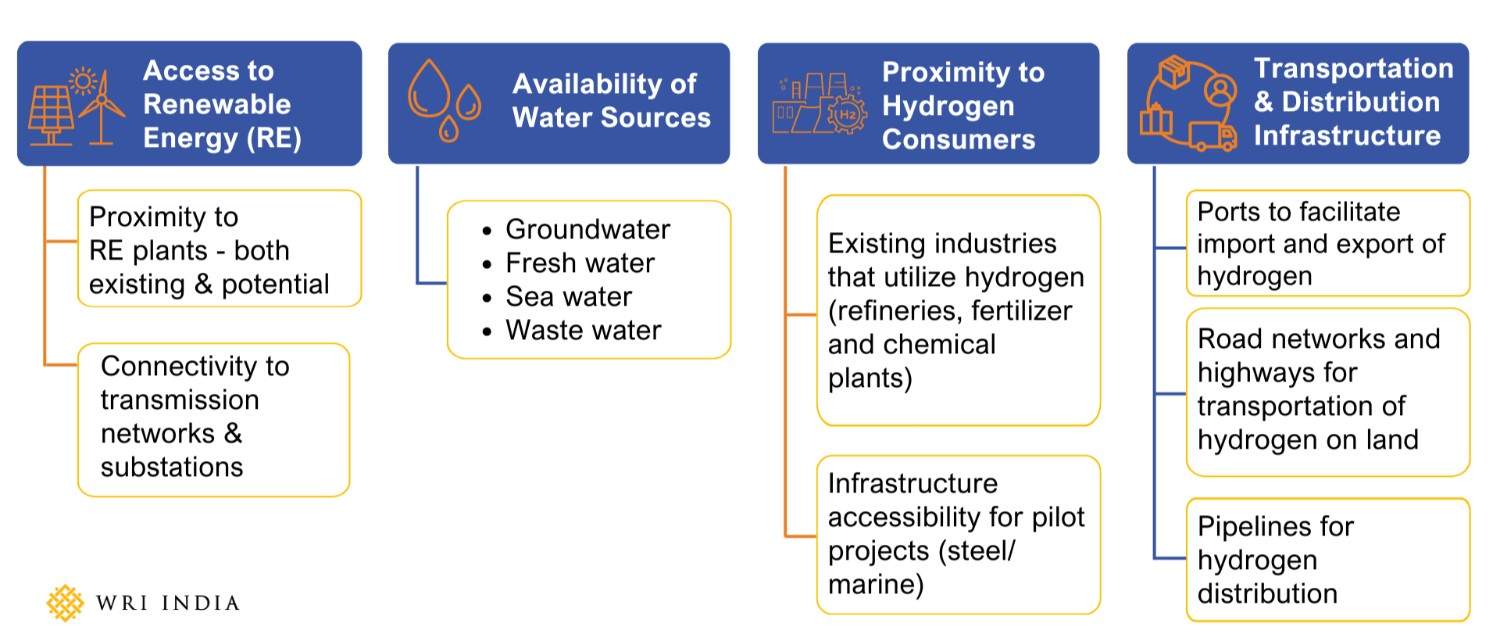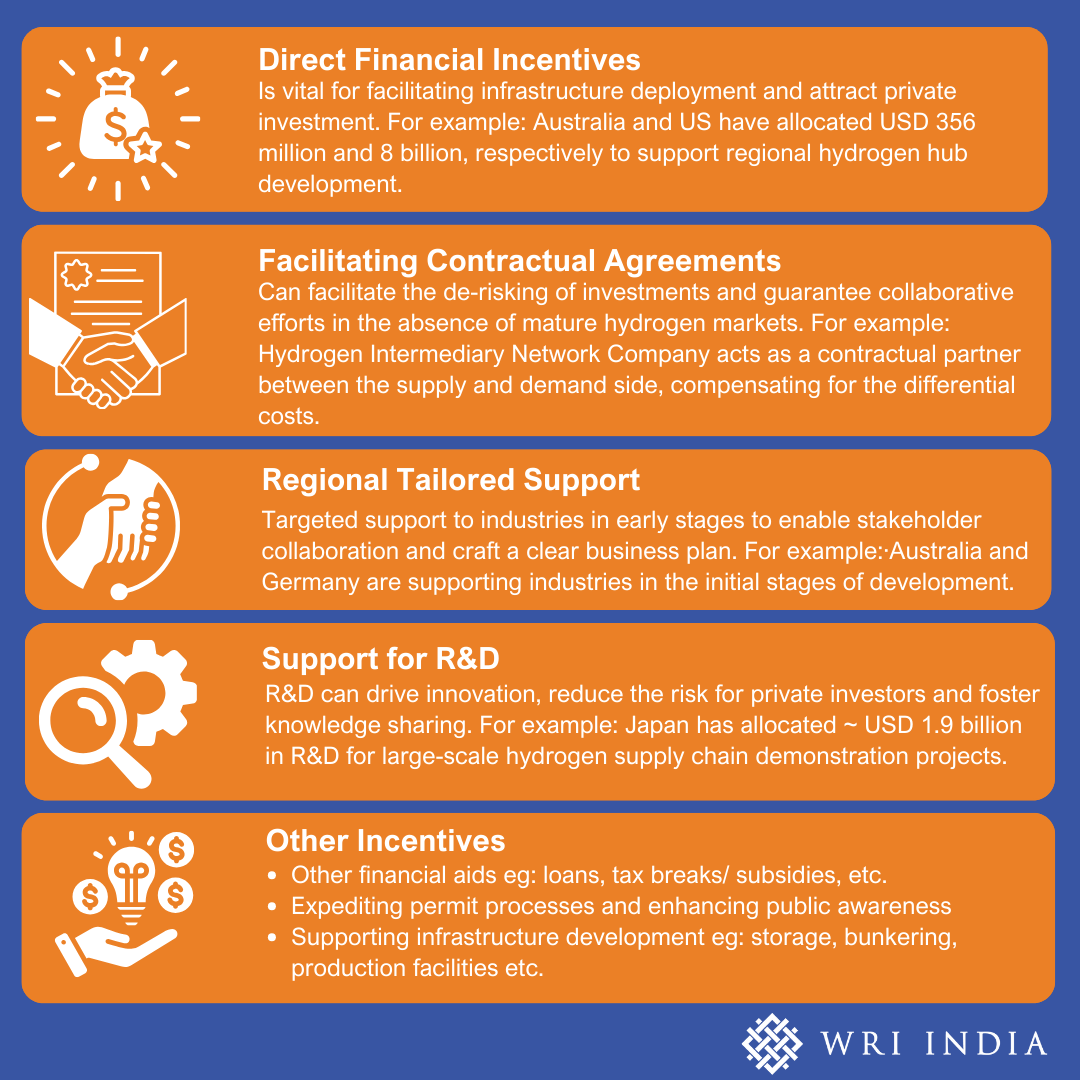
Key Criteria Influencing Hydrogen Hub Development
The second blog of our two-part blog series focuses on the key elements that drive the successful establishment of hydrogen hubs. You can read the first blog in the series here.
The previous blog of this two-part series, defined a hydrogen hub and its critical role in facilitating the application of green hydrogen to decarbonize hard-to-abate sectors. Hydrogen hubs aim to establish integrated hydrogen ecosystems offering regional solutions to challenges faced in the early stages of low-carbon hydrogen adoption. However, their establishment hinges on identifying optimal sites through assessment of key criteria such as availability of resources and infrastructure. Along with the resource and infrastructure requirements, the presence of incentive mechanisms also plays a crucial role in determining the hub's functionality and economics.
Availability of Resources and Infrastructure
Evaluating key criteria such as renewable energy, water, distribution infrastructure and consumer industries is crucial for identifying viable locations for hydrogen hubs. This can help ensure optimal resource utilization, environmental sustainability and market accessibility. For example, countries like South Africa have conducted feasibility studies in collaboration with industries to identify the potential locations for hydrogen hubs. Countries, like Australia and the US, require low-carbon hydrogen developers to provide a rationale within their proposal for the selected sites.
Hubs can be developed as either Greenfield projects, which are developed from scratch, or Brownfields, which are repurposed from existing infrastructure. Both these development strategies are aimed to promote utilization of green hydrogen and establishing supply chain links within the region. Key resources and infrastructure for establishing a hydrogen hub are:
- Access to Renewable Energy (RE): Proximity to abundant and reliable sources of renewable energy is crucial for green hydrogen generation. The renewable energy can be generated close to the hub location or can be brought in through electricity transmission lines.
- Availability of Water: Green hydrogen production via electrolysis requires a substantial but varying amount of water based on the type of source. Therefore, ensuring water availability for both green hydrogen production and the surrounding community's needs is essential to maintain social and ecological balance.
- Consumer Industries: The presence of hydrogen consumers is crucial for ensuring market demand. Assurance of market demand provides potential project developers and stakeholders with the confidence to commit resources for the establishment and expansion of infrastructure.
- Transportation and Storage Infrastructure: Since hydrogen has low-energy density, its storage and transportation require cost-effective, safe and efficient solutions. Various modes of transportation and storage can be leveraged to facilitate the transportation and distribution of hydrogen and its derivatives from production sites to consumer industries/export terminals.

The scale of a hydrogen hub can vary in production capacity based on market demand, targeted outcomes and end-use applications. As the global landscape around hydrogen hubs evolves, various mechanisms for hub development have started to emerge. Classifying these mechanisms according to their scale and scope can provide valuable insights to inform and guide future projects.
| Small Scale | Medium Scale | Large Scale | |
|---|---|---|---|
| Focus | Small Scale Small-scale producers and consumers within a region | Medium Scale Medium-scale producers and consumers within a region | Large Scale Large-scale, low-cost production and storage for export of hydrogen and its derivatives |
| Electrolyzer Capacity (typically) | Small Scale 1-10+ MW | Medium Scale 10-300+ MW | Large Scale 250-1000+ MW |
| Consumers | Small Scale Demonstration projects typically emerging from mobility and decentralized power applications | Medium Scale Partially replacing grey H2 in industries/ mobility applications/ technology scaling | Large Scale Large-scale industrial users (ammonia, steel, chemicals), export to international off-takers |
Source: clean-hydrogen-europa.au
Varying scales of hydrogen hubs exhibit unique characteristics that influence their location, resource, and infrastructure requirements. For example, in terms of access to renewable energy, small-scale hubs can utilize existing renewable energy plants in the vicinity to meet their energy needs. However, medium and large-scale hubs will require proximity to transmission networks and substations to facilitate integration with large capacity renewable energy sources.
Similarly, the availability of water presents different considerations depending on the size of the hub. Water availability assessment for small-scale hubs, emerging from pilot projects, should be based on future expansion plans, as the initial demand may be modest. However, medium and large-scale hubs must ensure sufficient water availability for both industries and community needs, with abundant water access being a key criterion.
Policy Incentives
The concept of a hydrogen hub has gained traction globally with several countries incorporating them into their hydrogen strategies. These strategies take unique approaches, with varying definitions and designs, and their associated incentive mechanisms for hub development. Regions that proactively support the hydrogen economy through targeted policies, especially policies around hydrogen hubs, are better positioned for their development. Some such policy initiatives by different countries are shown in the infographic below.

Sources: csiro.au, energy.gov, env.go.jp, hintco.eu, business.gov.au, hy.land, nedo.go.jp
Globally, countries are embracing the concept of hydrogen hubs and implementing diverse policy strategies tailored to their specific priorities. The effective utilization of resources, infrastructure and regional policies is crucial for the successful development of these hubs at a given location. Collaborative efforts towards this and informed decision-making can help accelerate technological advancement throughout the hydrogen value chain. The global hydrogen economy fueled by hydrogen hubs could enable the adoption of green hydrogen and play a critical role in accelerating decarbonization efforts across the world.
All views expressed by the authors are personal.
Read the previous blog in the series here.